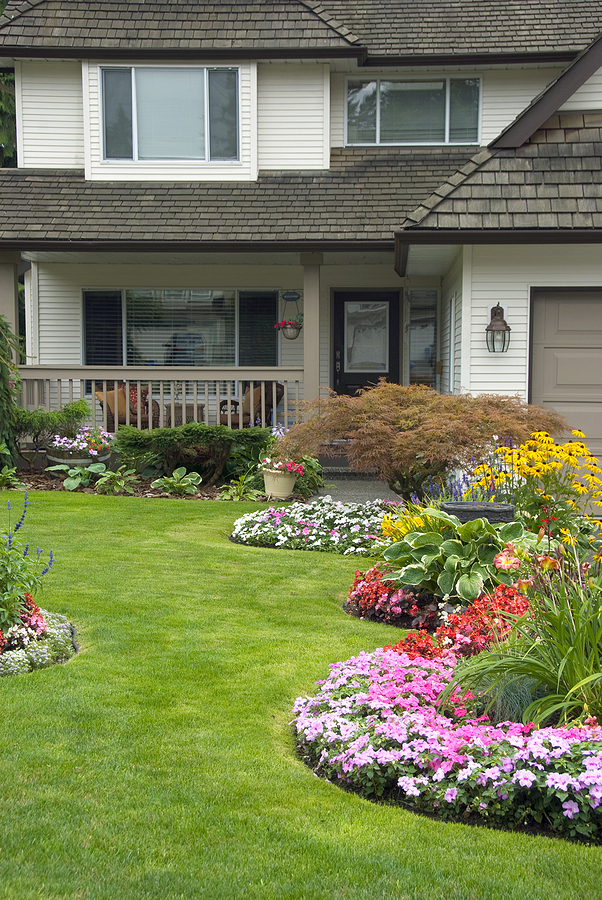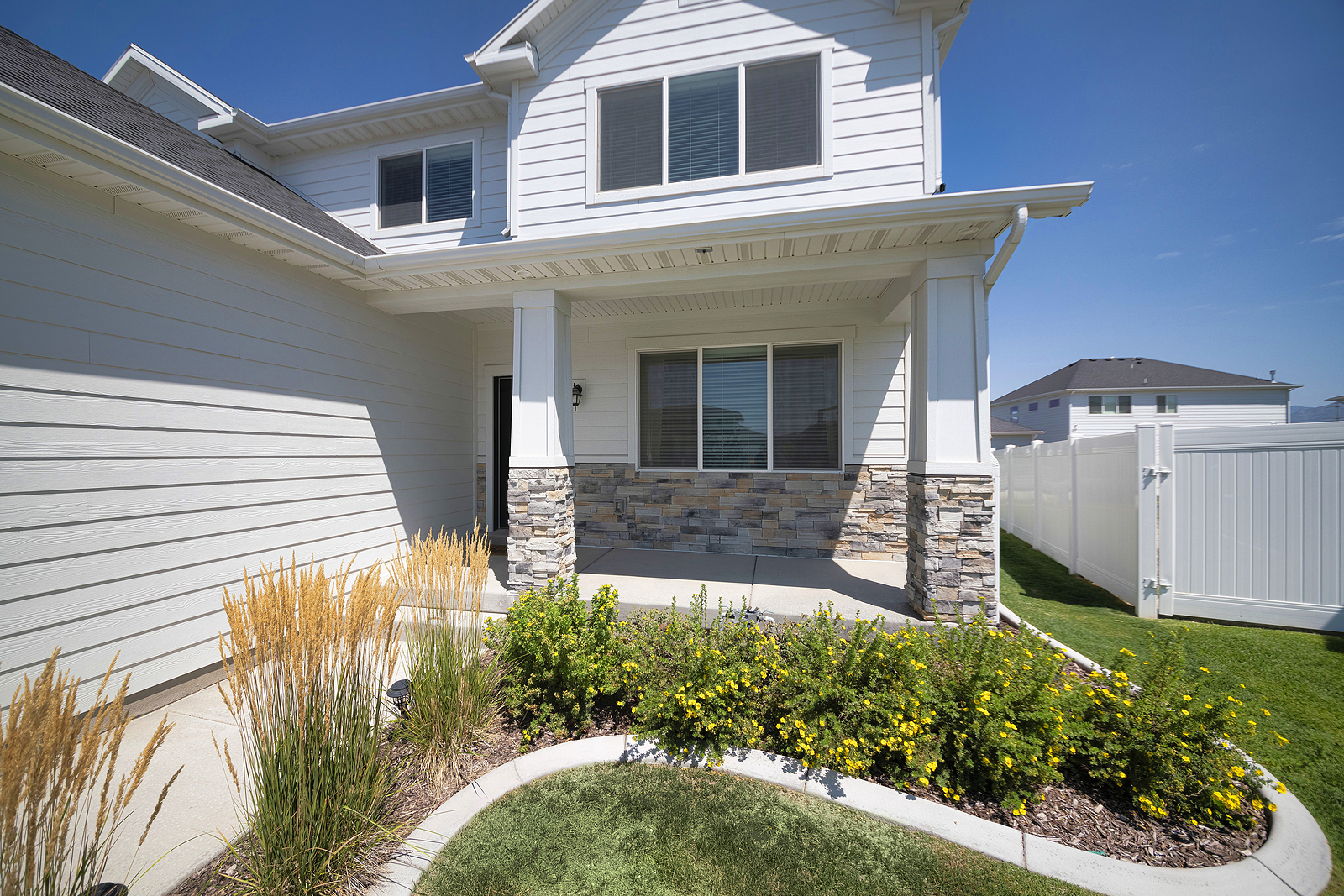What happens — or doesn’t — in that area is known in real estate circles as “curb appeal,” and it makes or breaks your home’s first impression.
The focal point of this area is the entryway to the home – the front door and surrounding area. This is where your guests’ eyes will settle as they approach your home.
If you are one of those brave souls who got past the unattractiveness of a home’s exterior and decided to purchase anyway, or if you’re planning on selling your home, let’s figure out how to make your front door entrance warm and inviting.

Considerations
When planning the landscaping for your front entry, there are three primary considerations, according to Environmental Landscape Associates, a Pennsylvania design firm:
- Principles
- Program
- Elements
Important principles include ensuring that the design is in synch with and complements the architectural style of your home. In other words, don’t go for a cottage garden entryway on a house with modern architecture.
Especially if you plan on putting the home on the market, curb appeal is far more critical than your personal taste in landscaping.
The second consideration, the program, is part of the process wherein you’ll need to determine how to utilize the space. Is the entryway merely for front-door access, or will there be entertainment elements also?
Large porches can accommodate seating and dining areas that become part of the home’s curb appeal. Don’t forget any privacy concerns. If you need to screen the front windows from neighbors or passing traffic, the barrier must coordinate with the other elements.
The design elements include everything you’ll need to create it, such as hardscape elements (bricks, pavers, etc.) and plants – both in the ground and in containers.
When deciding which plants to purchase, refer back to the principles and the program to ensure everything flows and is tied together at the end of the project.
Formal Entry Ideas
Formal entryways should exude symmetry. Think “organized.” Both sides of the entryway should mirror one another. This balanced approach lends a formal feel to the area.

Use patterned hardscapes, formal, shaped hedges, and elegant groundcovers. Hedging to consider includes:
- Juniper
- Rosemary
- Boxwood
- Holly
Frame the front door by planting – either in the ground or in attractive containers – identical plants on either side.
Informal Entry Ideas
You can get a lot more creative when creating informally landscaped entryways. Use natural stones on the walkway and, set them in irregular patterns, mix and match shrubs and perennial flowering plants. Line the walkway with interesting edging materials, such as a small white picket fence or colorful flowers.
If you aim for a relaxed feel, such as with a cottage entryway, use fragrant flowering plants such as roses, lilies, lavender, and thyme.
Soften a concrete or rigid walkway surface by lining it with soft-colored plants, such as dusty millers, combined with any red- or pink-foliage landscape plants, such as begonias or multi-colored coleus.
Year-Round Appeal
Whether your landscaping at the front door entrance is formal or casual, ensure it remains interesting all year. Combine deciduous and evergreen trees and shrubs so the entry isn’t completely bare when the leaves fall.
The experts with the University of Missouri Extension suggest choosing deciduous trees that bear flowers in the spring and summer, have good foliage color in the fall, and have an exciting branch structure.
Consider a mixture of the following plants:
- Ornamental grass
- Woody ornamentals, such as abelia and Japanese bayberry
- Perennials, such as sedum
Put it all together
When the aim is to focus on the entryway, the most common arrangement of plants is to place large plants at both ends of the house and progressively smaller plants as you move toward the door.
The University above of Missouri Extension agents also suggests using odd numbers of plants in groupings – such as three or five – when designing an informal entryway. Your goal is formal, with symmetry and order, and use even number groupings.
The path to your front door, whether it heads straight to it or meanders a bit, requires landscaping to fit the home’s architecture and to provide year-round interest.
After all, this area is your home’s welcoming “handshake,” according to the editors of Sunset Magazine. Avoid giving your visitor the limp fish while you don’t want to offer a bone-crusher.




